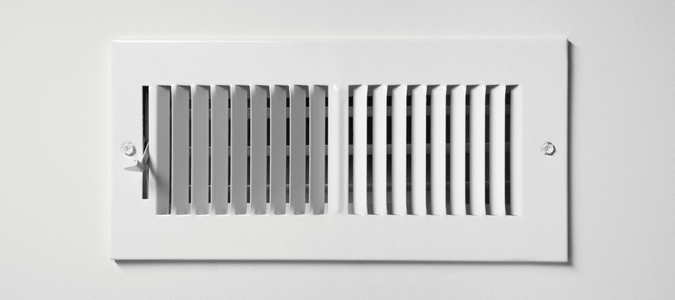
Your eyes are itchy and watery. You’re sneezing and coughing. You might expect these symptoms when you walk outside or play with your dogs, especially during the times of year that seasonal allergies are a problem.
What if this starts happening inside your own home?
If you’re noticing nose stuffiness, wheezing or throat irritation whenever you’re indoors at your house, the problem could be hiding in your air vents. You might be dealing with black mold.
You can usually spot mold on the walls, floors, ceilings and fabrics around your home. But sometimes, harmful mold lurks in a place you can’t see: inside your air vents.
If you suspect you may have black mold hiding in your air vents, you’ll need to take action to determine what your problem is and take steps to make sure your family is not at risk. This comprehensive guide will help you understand symptoms, solutions and other important information about this health-threatening problem. It will also explain how preventative maintenance from an AC professional can prevent black mold from ever coming into your duct system to begin with.
What Is Black Mold?
Let’s start by identifying the enemy: black mold. Black mold, or Stachybotrys chartarum, is a species of mold or fungi. You can typically identify black mold by its color. Many other molds are green or grey, but black mold tends to be a dark greenish black or gray color. It will appear around the home as a slimy, dark greenish-black or gray substance. Black mold grows off of moisture, releasing spores as it consumes organic substances.
The types of substances this type of mold feeds off of include things such as wood and cotton. In the home, you can expect to find it growing on materials such as damp drywall, insulation and carpets. Mold typically does not grow on metal, glass and plastic. Because of this, the most common places you find black mold include walls, carpeting, insulation, furniture and ceilings.
Unfortunately for homeowners, black mold also loves air vents, where spores are naturally circulated. If air vents haven’t been professionally cleaned in a while, there will be plenty of dust for black mold to feed on. Similarly, if your air ducts aren’t inspected and repaired routinely, leaks and other problems can allow black mold to thrive.
The spores of black mold can cause a variety of undesirable symptoms and health problems when inhaled or ingested by humans. These can be symptoms as simple as itchy eyes to more serious consequences, including long-term lung damage.
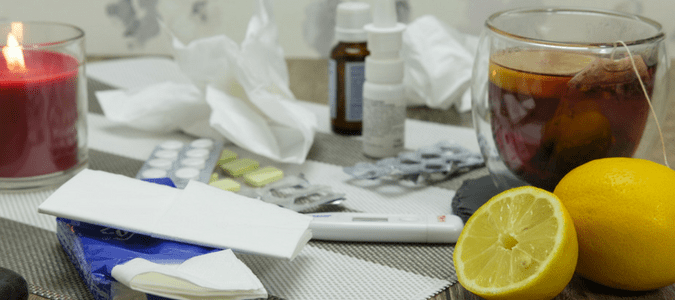
Mold In Air Vents: Symptoms To Watch For
Black mold in your air vents can cause a variety of unpleasant symptoms and health problems. The symptoms may vary from person to person, and can also depend on the length of exposure and the amount of spores inhaled.
Common symptoms and health problems caused by black mold may include:
- Itchy, irritated eyes
- Chronic coughing and sneezing
- Fatigue and headaches
- Rashes
- Irritation to mucus membranes of the throat and nose
- Difficulty breathing
- Impaired concentration
- Nausea
- Vomiting and/or diarrhea
If you suspect that you or someone in your household has been exposed to black mold, it’s crucial to take swift action to protect your health and remove contamination. Consult a professional to have the mold removed in a safe, effective way and make sure to also consult an AC pro to prevent a future infestation.
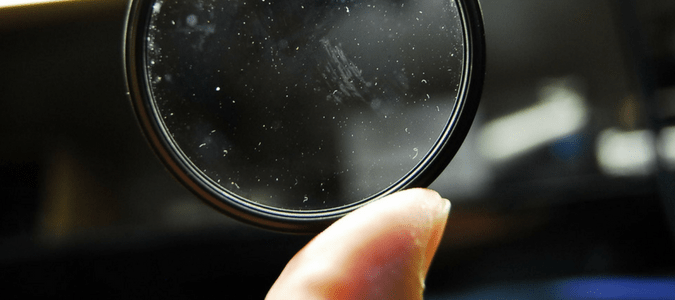
How To Spot Signs Of Black Mold In Air Vents
Mold can be one of the negative effects of floods or can indicate a problem with your air conditioning system. When black mold grows on walls, floors, carpets and so on, it’s relatively easy to spot. However, when black mold starts growing in your air vents, things get a little trickier.
You may have black mold in your air ducts if you notice any of the following signs.
Black Dust Around Air Vents
If you notice black dust around your air vents, this could be a sign of black mold growing within. The black dust may be patchy and difficult to wipe off.
Musty Odors
Black mold has a distinctive unpleasant, musty smell. If there is black mold growing in your air vents, you may notice a musty aroma when you run your AC.
Health Symptoms
With black mold growing in your air ducts, you may notice symptoms like itchy eyes and sneezing growing worse when you’re indoors, particularly when you’re running the AC.
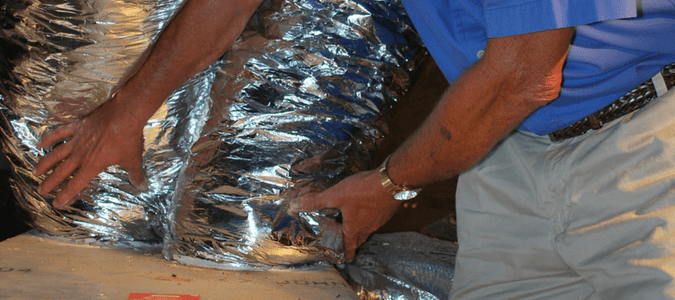
How To Remove Mold From Air Conditioner Ducts
Removing black mold can be a challenge, and is very time-consuming. Generally, the process involves taking apart your AC system to vacuum and clean the system using powerful agents. The cleaning must be done thoroughly and correctly, or the mold will grow back, and could even spread to other areas of the house.
We’ve summarized the basic steps below:
Step 1: Contact a certified mold inspector to confirm the substance is black mold. Otherwise, you could end up wasting a lot of time and money in the removal process.
Step 2: Examine the insulation around your air ducts. If the black mold in your air vents has spread to the insulation, it will need to be replaced.
Step 4: Clean and disinfect the ductwork using the proper tools and approved killing agents.
Step 5: Perhaps the most important part of the process is to find out what caused the growth in the first place. Otherwise, the black mold will continue to reappear even after you remove it.
Since the process can be complex, sensitive, time-consuming and toxic, it’s highly advisable to seek professional help if you have a problem with black mold. An experienced AC technician will have the tools and killing agents necessary to clean your air vents and prevent your ducts from being a breeding ground for this dangerous fungus. A professional will also be able to locate and fix the source of the problem, preventing the problem from happening in the future, saving you money and helping to keep your household healthy.
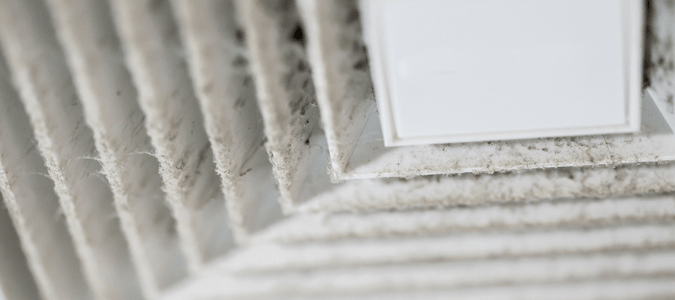
What To Do About Black Dust Around Air Vents
What’s an even better solution to stopping black mold? Keeping it from ever growing in your air ducts or anywhere in your house in the first place.
You can save yourself money, stress, and health issues by taking steps to prevent mold infestations before they occur. There are a few tactics you can use to stopping black mold from growing in your air ducts and home.
Change AC Filters Regularly
Regularly changing your filters is one of the most important steps you can take to prevent dust and dirt from clogging your air vents. When debris is allowed to build up in your air vents, this promotes the accumulation of spores.
Wondering when and how to change your central air conditioner filter? Depending on the type of filter you have and the size of your family, you should change your air filters every 30 to 60 days. If you have a pet, you should change your filters more frequently. Most systems are very straightforward. You can simply remove the filter cover, take out the dirty filter, get the new filter out of its packaging and place it inside.
Clean Ducts Regularly
At least twice a year, you should have a professional technician perform maintenance and cleaning on your air ducts. An AC professional will also be able to spot and fix any problems before they lead to mold growth in the first place.
Fix Any Problems ASAP
Keep an eye out for leaks, cracks, damage and other potential mold-causing issues. If you address seemingly small problems such as these early, you may be able to prevent them from growing into more costly, more serious concerns like black mold infestation.
Watch Wet Spots
Dry wet spots immediately as soon as you notice them. This includes droplets from a leaky pipe, spills on your carpet and seepage in basements and crawl spaces. Dry floors that are damp from spills or showering and avoid leaving wet clothes in the washing machine for extended periods of time.
Maintain Gutters
Black mold can grow around your gutters due to roof leakage caused by clogged or broken parts. You should clean and repair your gutters routinely, and look out for wet spots after rainfall that could be a sign of a problem.
Improve Ventilation
Proper ventilation can help prevent the air from retaining moisture and encouraging the mold to grow. You can improve circulation in your home by cracking open windows, opening doors between closets and placing furniture away from your walls. Proper ventilation is especially important in high-moisture areas like the bathroom, kitchen and laundry rooms.
Place Carpets Strategically
Try to avoid using carpets in rooms that tend to have high levels of moisture, like bathrooms and kitchens. Remove water-damaged rugs from your home immediately.
Monitor Humidity Levels
Ideally, you want the humidity level in your home to stay between 30 and 60 percent. Lower levels of humidity can cause excessive dryness and other health concerns, while higher levels promote mold growth and can make your home hot and uncomfortable.
The simplest way to monitor the humidity levels in your home is to purchase a humidity sensor. You can purchase one of these online for around $10.
ABC Can Keep Your Family Comfortable And Safe
Black mold is a serious problem that should be treated immediately and professionally. However, you shouldn’t let worry about black mold growth keep you up at night. The truth is, this type of toxic mold is uncommon in air ducts that are regularly cleaned and maintained by professionals. With years of experience and licensed professionals, ABC Home & Commercial Services can provide proactive care for your air ducts and prevent black mold from ever rearing its ugly head in your home. Leave the air duct checkup, repair and cleaning to us.